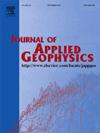Gravity gradient signal extraction based on time-frequency feature threshold method
IF 2.2
3区 地球科学
Q2 GEOSCIENCES, MULTIDISCIPLINARY
引用次数: 0
Abstract
Gravity gradient, defined as the spatial derivative of gravitational acceleration, represents the detailed variation of the gravity field and plays a significant role in resource exploration and auxiliary navigation. Airborne gravity gradient measurement is an important method for obtaining high-precision gravity gradient data. Compared to traditional gravity measurement techniques, it offers superior measurement efficiency and provides high-frequency information of gravity field which reveals small-scale terrain features. However, it also introduces more high-frequency measurement noise. Due to the randomness of Earth's topography and resource distribution, the high-frequency characteristics of gravity gradient signals are mainly concentrated in specific time and frequency ranges, exhibiting distinct time-frequency features. This paper employs the VMD and Hilbert transform to obtains the time-frequency features of gravity gradient signal, and proposes a time-frequency feature threshold method to extract gravity gradient signal. This method can accurately analyze and extract the gravity gradient signals components without being affected by the same frequency noise, suppressing 78 % of the noise in simulation data. Additionally, the proposed method is validated in the gravity gradient data of actual terrain, demonstrating over 19 % improvement compared to traditional smooth filter and wavelet threshold methods. Furthermore, it effectively retains the high-frequency characteristics of gravity gradient signal, enhancing the advantages of airborne gravity gradient signals

基于时频特征阈值法的重力梯度信号提取
重力梯度是重力加速度的空间导数,它代表了重力场的详细变化,在资源勘探和辅助导航中具有重要作用。航空重力梯度测量是获取高精度重力梯度数据的重要手段。与传统的重力测量技术相比,它具有更高的测量效率,并提供重力场的高频信息,揭示了小尺度的地形特征。然而,它也引入了更多的高频测量噪声。由于地球地形和资源分布的随机性,重力梯度信号的高频特征主要集中在特定的时间和频率范围内,表现出明显的时频特征。本文利用VMD和Hilbert变换得到重力梯度信号的时频特征,并提出了一种提取重力梯度信号的时频特征阈值方法。该方法能在不受同频噪声影响的情况下准确地分析提取重力梯度信号分量,可抑制仿真数据中78%的噪声。此外,该方法在实际地形重力梯度数据中进行了验证,与传统的平滑滤波和小波阈值方法相比,改进了19%以上。有效地保留了重力梯度信号的高频特性,增强了航空重力梯度信号的优势
本文章由计算机程序翻译,如有差异,请以英文原文为准。
求助全文
约1分钟内获得全文
求助全文
来源期刊

Journal of Applied Geophysics
地学-地球科学综合
CiteScore
3.60
自引率
10.00%
发文量
274
审稿时长
4 months
期刊介绍:
The Journal of Applied Geophysics with its key objective of responding to pertinent and timely needs, places particular emphasis on methodological developments and innovative applications of geophysical techniques for addressing environmental, engineering, and hydrological problems. Related topical research in exploration geophysics and in soil and rock physics is also covered by the Journal of Applied Geophysics.
 求助内容:
求助内容: 应助结果提醒方式:
应助结果提醒方式:


